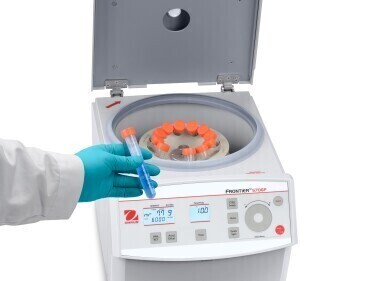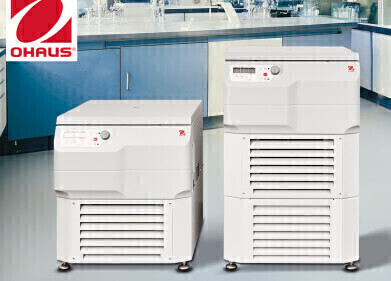Centrifuge
Disc Centrifuge System Used for Nanoparticle Characterisation
Jan 03 2013
Analytik report on the use of the CPS Instruments Disc Centrifuge in the Surface and Nanoanalysis group at the National Physical Laboratory (NPL), Teddington, UK.
NPL supplies a range of measurement services, reference materials, and software, which underpin quantitative surface analysis. Among the measurement services offered is nanoparticle sizing for which a suite of particle sizing techniques are employed.
One of the techniques used is Differential Centrifugal Sedimentation or DCS. DCS is used to obtain ultra-high resolution size distributions of particles in the nano- and micron- range. The size range of the particles that can be analysed by DCS depends on the density of their constituent materials.
Group member Nia Bell described how she uses DCS. "We have used DCS to size particles and check for aggregation. We have also combined the density dependent information from DCS to density independent information from other techniques to investigate particle porosity and the functionalisation of particle surfaces. I have looked at silica and gold particles while other members of the group have looked at cerium oxide, titanium dioxide and zinc oxide particles amongst others."
Bell then continued to describe the density measurements in more detail: "DCS was used to investigate the adsorption of protein on gold nanoparticles. With increasing protein shell thickness the effective density of the particles decreased. For accurate interpretation of the DCS data this variable effective density had to be considered. Either the density of the shell was assumed to be equal to some constant value and the shell thickness extracted from the DCS data, or the shell thickness was assumed to be that measured using a density independent technique and DCS used to calculate the density of the shell. From the density and thickness of the protein shell, the amount of protein adsorbed could be estimated."
The CPS Instrument performs nanoparticle size analysis utilising the Differential Centrifugal Sedimentation method. This offers the unique ability to resolve very close multimodal particle distributions and to distinguish extremely small shifts in particle size. Rather than using a predictive algorithm, the instrument physically separates the nanoparticles and then measures them as they pass a light source detector and thus provides full characterisation in real time.
Digital Edition
Lab Asia Dec 2025
December 2025
Chromatography Articles- Cutting-edge sample preparation tools help laboratories to stay ahead of the curveMass Spectrometry & Spectroscopy Articles- Unlocking the complexity of metabolomics: Pushi...
View all digital editions
Events
Jan 21 2026 Tokyo, Japan
Jan 28 2026 Tokyo, Japan
Jan 29 2026 New Delhi, India
Feb 07 2026 Boston, MA, USA
Asia Pharma Expo/Asia Lab Expo
Feb 12 2026 Dhaka, Bangladesh


















